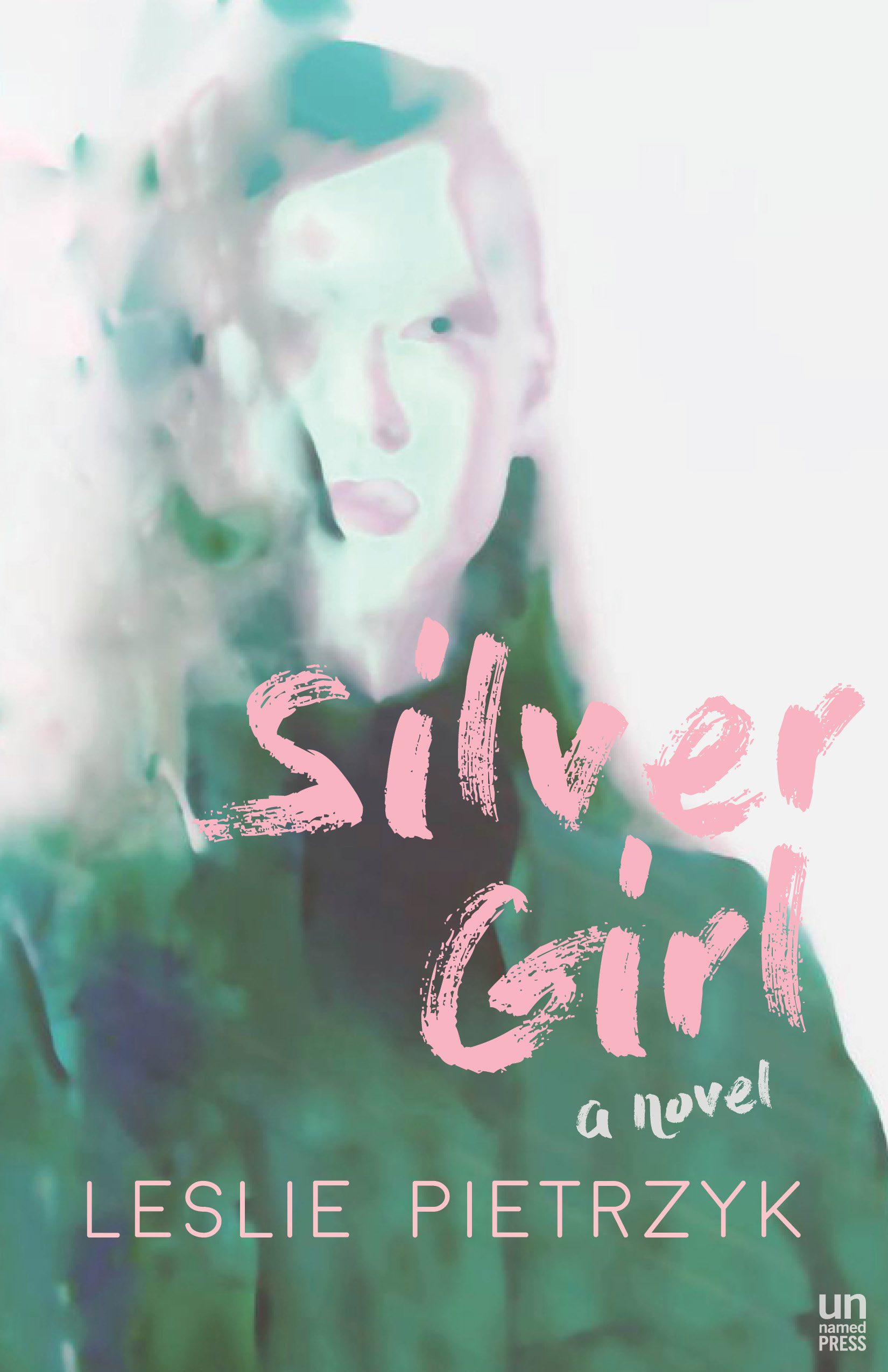Leslie Pietrzyk’s newest novel, Silver Girl, looks with keen insight at female friendship and one young woman’s desire to rewrite herself when she leaves home for college.
Like her previous book, This Angel on My Chest, a collection of linked stories all featuring a young widow, this novel doesn’t veer away from painful subject matter or the hurtful or stupid things humans do to themselves and others. Pietrzyk’s narrator, for instance, is involved with her best friend’s fiancé. And he is involved with at least one other woman. With compassion and understanding, Pietrzyk illuminates her protagonist’s sentimental education.
Set during the Tylenol murders, Silver Girl also examines justice—or the lack of it—and our inability to really know another’s past.
In January 2018, Pietrzyk and I exchanged emails about writing a nonlinear novel, female friendship in literature, and the unresolved mystery of the Tylenol murders.
***
The Rumpus: Though Silver Girl begins at the beginning of the narrator’s time in college, the book moves around in time quite a bit, going back to her life in Iowa, leaping ahead to later in her college career. The effect is a kind of breathlessness, and reminds me of conversation, the way we might tell a long story to a close friend. There’s a kind of “Oh, yeah, I forgot to tell you this part…” feel to it. Why was it important to you for the novel to move in a non-linear way? Can you talk about the structure of the novel?
Leslie Pietrzyk: I love this image of breathlessness while spilling out a long story! I didn’t write the book chronologically, which offered a sense of freedom as I simply scribbled away without worrying how the pieces might fit together. Once I started thinking about plot and arc, ordering events chronologically didn’t lead elegantly to rising action. Breaking away from a chronological rendering might seem gimmicky, so the question was, as it is with any structural decision, why? Why must this story unfold in this particular way? Here, the non-linear, slightly fragmentary chronology reflects the narrator remembering back to a time where she considers herself an entirely different person, when she was literally trying to invent a “person” she could inhabit. So many of this book’s characters are holding tight to deep, hard secrets—often keeping the truth even from themselves—and it was critical to consider the timing of when and how the reader learns information. I luxuriated in that tension of a reader knowing something another character doesn’t… especially when that character is the first-person narrator.
Rumpus: You call Silver Girl a collage novel but it’s also a college novel—that is, a novel about the narrator’s education, both academic and emotional. Our narrator has left home and intends to reinvent herself. I keep thinking of the crappy trunk she brings to college as a freshman and the way she has to drag it from the train station all by herself. She’s physically lugging her past into her future in this moment.
Pietrzyk: I was drawn to the bildungsroman, an under-used word nowadays, with its emphasis on the actual education of a young character. So many examples I thought of were about male characters. How easy is it for a girl to, say, jump on a raft and head down the Mississippi or jump in a car pointed to California? At a certain point, this model fails because we get worried about the physical safety of any girl roaming around on her own, which is a stifling way to think (and be). So my challenge to myself was to see what might happen to the girl who dared be so bold as to state that she was shedding her past, that she was skipping town for new territory. What kind of girl declares that she intends to start over, clean-slate fresh? And how does the culture respond to such a girl?
Rumpus: The narrator is unnamed, and it’s clear she doesn’t see herself as important or worthy of a name. At times, she feels “like a shadow standing next to Jess.” At what point in the writing did you decide to keep the protagonist unnamed?
Pietrzyk: She never had a name in any of my early sketches, though I figured I’d name her eventually. Jess wasn’t Jess at first, but rather a name I knew I couldn’t use for personal reasons, so when I was working to turn a prompt piece into a short story, I spent time thinking about and researching names for Jess. (I love the site Magic Baby Names where you type in a name you can’t use and it offers names that are—really!—in the vein of that off-limits name.) Keeping a character unnamed for a while is part of my usual process, to save me from locking onto a bad name too soon. (However, I end up with a fair number of unnamed characters in my short fiction because at a certain point no name sounds right.) The thing is, the writer can’t have an unnamed narrator for no reason, so again, the question became, why? Why not reveal her name to the reader at some point? It’s not as though she doesn’t have a name. (I mean, she knows her name. I know her name.) But halfway through the initial draft, I started thinking about the type of person who slides through life unnoticed, someone who longs to be unnoticed, and the reasons a person might be this way. The book then shaped itself toward this person, and I knew the reader would never learn her name.
Rumpus: It’s difficult to think of other novels that look at female friendship in the same way that you have here, as the primary relationship at the center of the novel. In Silver Girl, the friendship is as complex and consuming as any romantic relationship. Why aren’t there more stories about female friendship? What are your favorite novels, stories, movies about female friendship?
Pietrzyk: I wonder if female friendship is overlooked in literature because for too long female characters were kept busy marching through the Marriage Plot? I can think of plenty of storylines about groups of young women, usually four, in the mode of Little Women: Mary McCarthy’s The Group, the Sex and the City quartet; and more recently, Another Brooklyn by Jacqueline Woodson, The Girls by Emma Cline, Perennials by Mandy Berman, and the TV shows Girls and Big Little Lies (I haven’t read Liane Moriarty’s novel Big Little Lies). Thelma & Louise was subversive for its ending, of course, but maybe also for its focus on two female friends. Female friendships are extremely complicated and rather mysterious, rich for fictional representation. As a writer, I’m attracted to power dynamics, and while the Queen Bee trope may feel overly-familiar, there’s plenty else that goes on in terms of power within female friendships.
Rumpus: A good friend of mine says “every friendship has rules.” Certainly, the friendship between Jess and our narrator does, with Jess primarily in charge. Our narrator values the friendship, but also creates problems. It was difficult to watch her do this, but is it also a necessary rebellion?
Pietrzyk: I’m not sure the narrator would think in these terms, exactly, because more than anything she wants to fit in. Or so she thinks. But she’s under so much pressure, hiding giant chunks of her true self from Jess and from herself, that I saw her as subconsciously wanting to get caught and therefore punished. It’s not an easy way to live, that’s for sure. I spent a lot of my time wanting to hug this narrator. And she’s surely jealous of Jess, which is a complicated emotional path: loving someone as you’re also deeply envious of the things they have, the lucky and uncomplicated life you imagine them living.
Rumpus: Can you talk about the research you did about the Tylenol murders for the novel? What information and details surprised or inspired you?
Pietrzyk: What surprised me is how little information is out there. Once I figured out that my story was not going to be a whodunit and that I wasn’t going to include real-life victims or family members, I understood that deep research wasn’t necessary and might actually be hindering (in this early part of the writing process). So I didn’t go for that sort of deep dive that might have led me to read pages and pages of Chicago Tribune newspaper articles. Instead, a general sort of knowledge about the parameters of the case served my story and kept me free to invent what I needed. I read an excellent pair of articles in the Chicago Reader and I also consulted a series of (possibly self-published) books written by Scott Bartz, a former Johnson & Johnson employee. What surprised me—and what surprises nearly everyone I talk to—is that as of this writing, no one was ever convicted of this crime. No one ever stood trial. No one was ever officially accused. That became an interesting question as well: how someone might escape justice after doing something heinous. (It’s becoming pretty clear that much of my novel writing process is playing Whack-a-Mole with questions!)
Rumpus: We know from early on that books, reading, and stories have offered the narrator—and her younger sister Grace—an escape from their difficult family life. At what point in the writing did you understand that our narrator would grow up to be a writer?
Pietrzyk: I think I resisted this outcome as it feels clichéd to me. But giving the narrator some writerly aptitude early on meant she could be knowledgeable about literature in a way that other girls, even college girls, might not be. So she was bookish all along. As I wrote on and as she emerged, it was clear that she was a person set apart from others; she was an outsider and an astute observer; she had a keen interest in how and why we tell stories… combine those qualities with her bookishness, and being a writer became the only possible career path for her, the poor thing.
***
Author photograph © Susan Hale Thomas.





